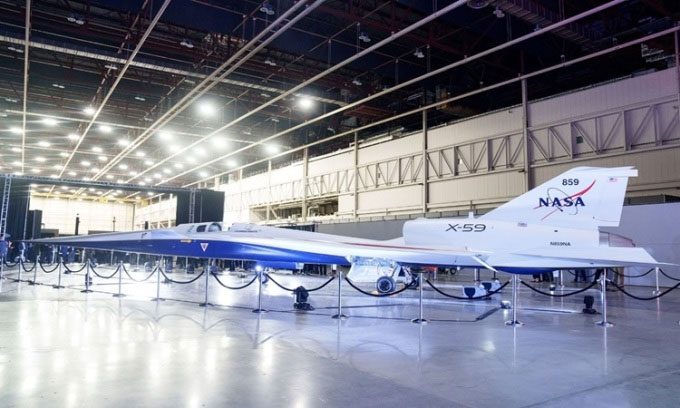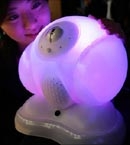NASA’s Silent Supersonic Jet Prototype Moves Closer to First Test Flight After Successful Engine Tests
Starting October 30, engineers from NASA’s X-59 QueSST (Quiet Supersonic Technology) program conducted a series of tests on the jet’s engine at Lockheed Martin’s Skunk Works facility in Palmdale, California, according to Space. The tests were conducted in phases. In preliminary testing, the engineering team ran the X-59’s engine at low speeds without firing it up to check for any leaks and to ensure that the various systems of the aircraft work in harmony. Following this, the X-59 engineering team fueled the aircraft and tested the engine, reporting that the jet has been performing very well so far.

X-59 aircraft in storage at Skunk Works facility. (Photo: NASA).
The X-59 is designed to cruise at a speed of Mach 1.4 (1,728 km/h) at an altitude of 16.7 km. The aircraft utilizes a modified F414-GE-100 jet engine from General Electric. The F414 engine series is widely used in military aircraft, including certain variants of the Boeing F/A-18 Super Hornet of the U.S. Navy. NASA previously used the F/A-18 to simulate the sound of the X-59 and to test microphones and various other sound sensors.
The design of the X-59 allows it to fly faster than the speed of sound without producing the typical sonic boom that occurs when breaking the sound barrier. Currently, supersonic flight over land is prohibited by the Federal Aviation Administration (FAA). NASA hopes the X-59 will demonstrate that supersonic flight can occur without creating a deafening sonic boom. This could potentially halve domestic flight times, benefiting not only commercial aviation but also disaster relief and medical transport.
To reduce the volume of the sonic boom, the X-59 features a unique geometric shape, including a long, beak-like nose (11.5 m) in relation to the total length of the aircraft, which is 30 m. Instead of producing a loud explosion that shakes the ground, the jet generates a sound similar to a car door closing when breaking the sound barrier. However, due to the elongated nose, the pilot operating the X-59 will have limited forward visibility. The cockpit of the aircraft does not even have a front window but is equipped with a eXternal Vision System (XVS), which includes cameras connected to a display in the cockpit, allowing the pilot to see forward through virtual reality technology.
The next phase of testing involves inputting data into the aircraft’s computer systems under both normal and fault conditions to observe how the vehicle reacts. Subsequently, the X-59 will run on the runway to evaluate how its surfaces, brakes, and engines operate on the ground. NASA has not disclosed when the X-59 will make its first takeoff. It is expected that the X-59 will fly over several U.S. cities to collect data on the quieter sound produced by the aircraft, as well as the community’s response to that noise.




















































